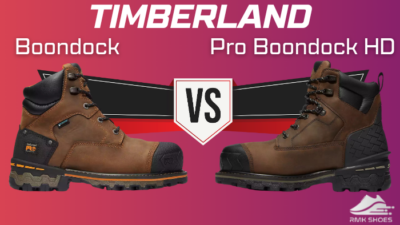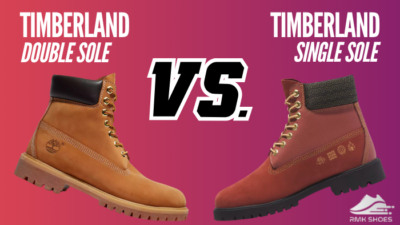As a Timberland lover, I have worn several Timberland boots. Among numerous Timbs, the Wheat Nubuck and Wheat have become my regular companions due to their timeless appeal.
If you’re confused about the Wheat and Nubuck and struggling to choose the appropriate one, I will clarify the confusion and assist you in selecting the best Timbs.
Throughout this comparison, I will share my experience and expertise about the Wheat Nubuck and Wheat Timbs to track down the best Timberland for you.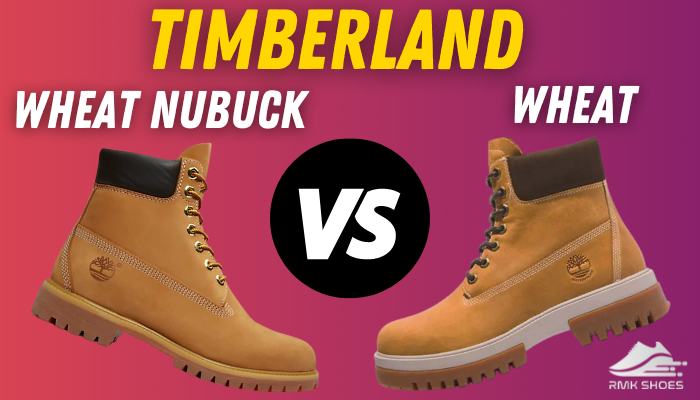
Without further ado, let’s begin!
Overview of Timberland Wheat and Wheat Nubuck Boots
While Timberland Wheat features a hard, smooth, and full-grain leather upper, the Timberland Wheat Nubuck features a soft, rough (suede-like texture) and durable leather upper.
Though the primary difference between Timberland Wheat and Wheat Nubuck is in the upper material, there are also some other dissimilarities that you should be familiar with.
Let’s start with Timberland Wheat.
Timberland Wheat boots consist of a full-grain leather upper that is tough and immensely durable. The appearance of this upper is smoother and primarily used in classic Timberland shoes like the iconic 6-inch Tims boots.
This full-grain leather is thicker than other leathers, which ensures extended durability.
Wheat Timberlands are easier to clean and need less maintenance than Nubuck. Due to the extra thickness and light & smoother surface, Wheat Tims are less prone to damage and show less wear and tear.
On the contrary, Timberland Wheat Nubuck boots consist of a particular type of leather that is polished to create a soft and suede-like texture.
This leather is rugged and primarily used in modern Timberland shoes such as Euro Hiker.
Due to sanding, the nubuck is a little thinner, which affects its durability, but offers a more secure and snug fit.
The stylish appearance of Wheat Nubuck makes it preferable for esthetically driven individuals.
However, this type of leather needs extra care and is hard to maintain. Moreover, it can easily show wear and tear.
Attribute Comparison of Timberland Wheat Nubuck and Wheat
Though the main differences are in upper materials, there are some divergences in texture, durability, breathability, versatility, and waterproofing.
Let’s perform a head-to-head comparison of Wheat Nubuck and Wheat to pinpoint the differences between these shoes.
| Attribute | Timberland Wheat Nubuck | Timberland Wheat |
|---|---|---|
| Type of Leather | Nubuck leather | Full-grain leather |
| Leather hardness | Soft | Hard |
| Color | Dark and light brown | A variety of colorways |
| Texture | Rough | Smooth |
| Style | Modern | Classic |
| Durability | Less durable | More durable |
| Maintenance | Need more maintenance | Need less maintenance |
| Water Protection | High | Low |
| Comfort | Excellent | Good |
| Versatility | More versatile | Less versatile |
| Weight | Heavier | Lighter |
| Breathability | Less breathable | More breathable |
| Uses | Casual and outdoor activities | Casual and everyday wear |
| Price | More pricey | Less pricey |
7 Key Differences Between Timberland Wheat Nubuck and Wheat Boots
Without a doubt, the primary difference between the Wheat and Wheat Nubuck versions is in the upper materials.
But this upper construction also impacts the overall shoe design and comfort.
To better understand the divergences between Timberland Wheat Nubuck and Timberland Wheat, consider the subsequent discussions.
1. Build and Materials
For the construction, the Nubuck and Wheat feature almost identical materials except the upper.
Depending on the boot models, the upper may consist of either nubuck (Wheat Nubuck) or full-grain leather (Wheat).
Both Wheat and Nubuck feature ReBOTL™ fabric (with at least 50% recycled plastic) for lining, lightweight EVA foam for the midsole, aggressive rubber lugs for the outsole, and a traditional lacing system for a secure fit.
As you can see, the primary difference is in the upper materials.
While the Wheat features full-grain, durable leather for a smooth surface and consistent look, the Nubuck features sanded leather that is soft and a little thinner with a rough texture like suede.
Full-grain leather is the most durable part of the hide and is less prone to damage, making it ideal for harsh weather conditions.
Conversely, the sanded Nubuck leather is more prone to damage and is less durable than the Wheat leather.
In short, if durability is a concern, Nubuck is the better choice. Alternatively, the sanded Nubuck leather is the best pick if look and feel are your concerns.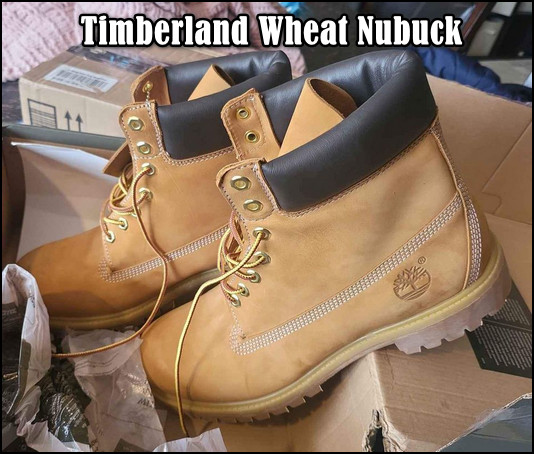
2. Style & Aesthetics
In terms of style and aesthetics, the Timberland Wheat offers a clean, minimalist aesthetic that is never out of fashion.
The smooth leather upper of Wheat boots is highly versatile and easily blends with any outfit.
These boots are preferable for casual and everyday costumes such as jeans, chinos, and skirts. I love to wear my Wheat for outings and even choose them for semi-formal meetings.
On the other hand, Wheat Nubuck has a velvety texture, making it ideal for casual outfits.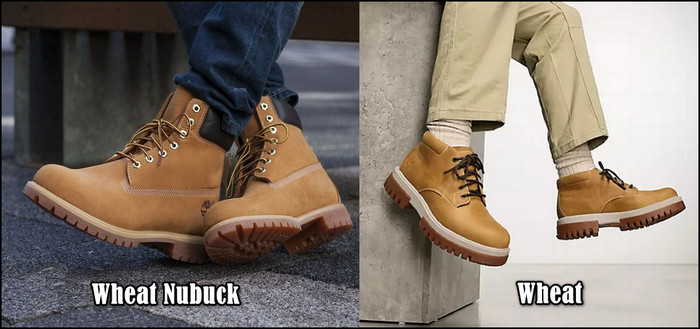
These boots are statement pieces, surpassing the classic design origin. The Nubuck boots are aligned with current trends and are preferable for their modern nature.
So, if you’re seeking a rugged and outdoorsy vibe, go for the Nubuck. Otherwise, go for the Wheat if you prefer a trendy statement piece.
3. Water Protection
Waterproofing is a significant concern for all-weather boots, and the same applies to the Wheat and Wheat Nubuck.
Both types of leather offer some protection against the water, but there is a twist.
While the Timberland Wheat version utilizes the natural water resistance ability of the leather and a waterproof lining to make the boots waterproof, the Timberland Wheat Nubuck version utilizes a waterproof membrane to ensure protection against wet conditions.
Along with the weather protection, both versions offer other protective features, such as a protective toe cap and heel counter.
The protective toe cap keeps your feet safe from bumps and wounds.
However, the Wheat version doesn’t have a heel counter like the Nubuck, but the Wheat boot offers great cushioning utilizing its thicker sole.
The Wheat Nubuck outshines the Wheat with its better waterproofing feature and better toe and heel protection.
4. Feel & Texture
Wheat Nubuck and Wheat are must-have Timberland shoes. Both types of leather offer a different initial feel and texture.
For instance, the initial feeling of the Wheat version was a little firm and smooth. On the other hand, the Wheat Nubuck was soft and rough.
The smoother full-grain leather of the Wheat version ensures a classic vibe with a natural feel.
Though it is firm initially, it becomes soft and adapts to your foot shape with time.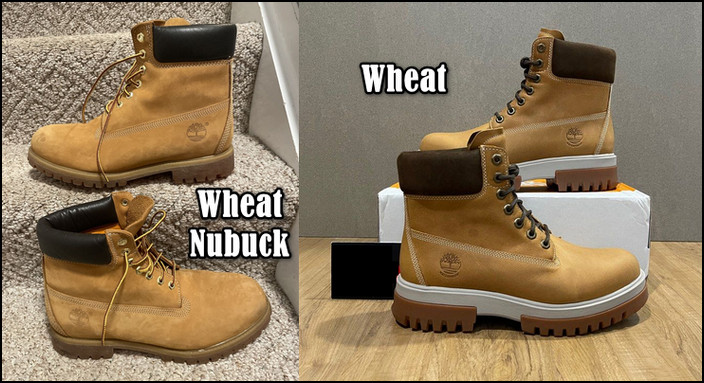
The minimal texture of this version features a sleek and clean look without distractions. Moreover, the smoother surface is easier to clean, and you can use a soft toothbrush to brush away dirt and dust.
Nubuck’s sanded finish ensures a luxurious and suede-like touch that feels premium and pleasant to the skin.
The texture is a little rough; hence, it requires more care and is prone to damage.
This Nubuck leather requires no break-in period, meaning you can start wearing this version without worrying about comfort.
So, if you prefer a smooth surface and firm experience, go for the Wheat. For a rougher texture and softer experience, choose the Wheat Nubuck.
5. Fit and Comfort
In terms of fit, both versions are true-to-size with some divergences.
For example, the Wheat version features a slightly snug initial fit that loosens up with wear. This version often needs a short break-in period for softening the leather.
Check out how to break in Timberland boots?
Conversely, the Wheat Nubuck version features an accommodating fit and requires no break-in period due to the sanded soft leather.
But what about comfort?
Undoubtedly, both versions are comfortable, but they vary in several aspects. The firm leather of Wheat may need some time to soften, but it ensures the best fit and molds to your foot shape over time.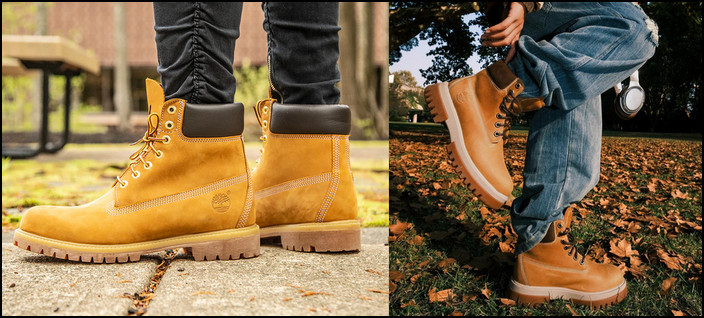
The wheat version offers fantastic ankle support, utilizing the padded collar and lace-up design.
On the contrary, Wheat Nubuck is soft and comfortable from the start and quickly adapts to your foot shapes to offer the best comfort.
Similar to the Wheat, it also features excellent ankle support.
In short, Wheat Nubuck surpasses Wheat with its more lavish initial comforts and more secure fit.
6. Durability & Maintenance
Usually, Timberland boots last longer than any other shoe due to their durable construction and more straightforward maintenance.
But due to the distinct leather upper, Wheat and Nubuck versions have some divergences in overall durability and upkeep.
The sanded Nubuck leather is a little thinner and less durable than full-grain leather.
Due to the suede-like texture, this version is more prone to scratches, stains, and watermarks.
On the other hand, the thicker upper part of the Wheat version is more durable than Nubuck and less prone to scratches and stains.
The smoother surface requires less maintenance and is easily cleanable with a brush.
But can you clean these boots with household items? The answer is yes, and here’s how to clean Timberland boots with household items.
| Parameters | Timberland Wheat Nubuck | Timberland Wheat |
|---|---|---|
| Durability | Moderate | High |
| Maintenance | High | Low |
| Scuffs & scratches | More noticeable | Less noticeable |
In summary, Timberland Wheat outshines Timberland Wheat Nubuck with a more durable upper that is easier to maintain.
7. Price and Significance
Undoubtedly, Timberland shoes are so expensive. However, the Wheat and Nubuck versions are available at a reasonable price.
While the price of Timberland Wheat Nubuck is around $200, Timberland Wheat is available for $150.
This price difference is primarily for the more expensive nubuck upper.
Making the Nubuck leather costs more than the Wheat leather and directly affects the overall price of both versions.
Fortunately, the prices of both versions are justifiable.
Pros & Cons of Timberland Wheat Nubuck and Wheat Boots
Like any other material, Wheat and Wheat Nubuck leathers have their own advantages and disadvantages.
Now that you know all the major and minor divergences between Wheat and Wheat Nubuck, you must consider the merits and demerits of both leathers before finalizing your purchasing decision.
Following are the pros and cons of Timberland Wheat Nubuck and Timberland Wheat.
Timberland Wheat Nubuck
- »More premium appearance and feel.
- »Better water protection than Wheat.
- »More comfortable due to its soft nature.
- »Better insulation in harsh weather.
- »Need higher maintenance.
- »More prone to damage.
Timberland Wheat
- »Classic and timeless style.
- »Wheat leather is more durable.
- »Easier to clean and maintain.
- »More cost-effective option.
- »Higher break-in period.
- »Less waterproofing than Nubuck.
Timberland Wheat Nubuck vs Wheat: Which One Should You Pick?
Choosing between the Wheat Nubuck and Wheat highly depends on your style preferences and individual needs. In case you’re seeking a more durable leather upper that needs less maintenance, go for the classic Timberland Wheat.
If you require a more comfortable fit, better waterproofing, and softer upper, pick the Timberland Wheat Nubuck.
Moreover, if you’re on a tight budget and want a cost-effective shoe between Wheat Nubuck and Wheat, choose the less premium Timberland Wheat boots.
Frequently Asked Questions
Is Nubuck better than Wheat leather?
The Nubuck leather is a soft and aesthetically enriched leather that offers the best comfort and a snug fit. This leather is less durable than full-grain Wheat leather and is vulnerable to damage. However, it provides better water resistance due to its extra waterproof membrane layer.
How do you take care of Timberland Wheat?
For cleaning Timberland Wheat, use a soft and clear toothbrush with a tiny amount of soap. Otherwise, you can also use Timberland’s suede brush kit to care for your Timberland Wheat boots.
Can you use soap and water on Nubuck?
Yes, you can use soap and a little water to clean your Nubuck boosts. Mix a few drops of liquid soap with water and dip a clean brush into it. Now rub the brush on the dirty spot and clean it gently. Remember, too much water can damage Nubuck.
What is the best cleaner for Nubuck leather?
Nubuck leather is sensitive to chemicals. So, you must avoid using harsh cleaners or chemicals to clean Nubuck leather. Instead, use a mild soap or leather cleaner to clean the Nubuck without damaging it.

